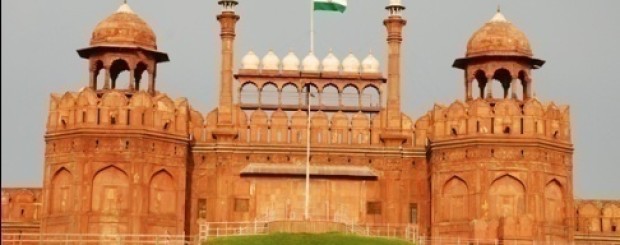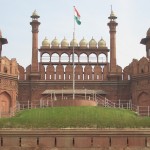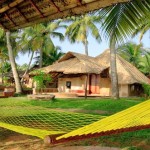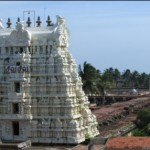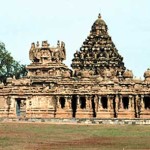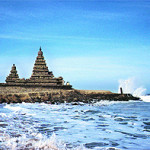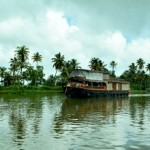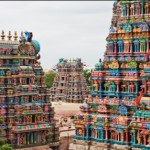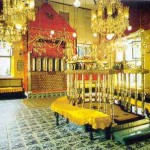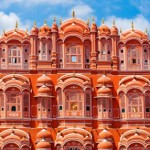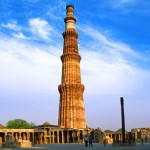16 Days Best of North East India With Pushkar

| Cities | No. Of Nights | Sightseeing & Attractions |
|---|---|---|
| Delhi | 2 | Qutab Minar | Jama Masjid | Red Fort | Rajghat | India gate | Gandhi Memorial | Rashtrapati Bhawan | Humayun’s Tomb | Rickshaw ride in Old Delhi |
| Varanasi | 2 | Attend Aarti at holy Gangase | Both Sunrise and Sunset boat cruises on the Ganga | Manikarnika Ghat | Sarnath | Banaras Hindu University| Vishwanath Temple |
| Khajuraho | 1 | Monuments of Khajuraho | Sound and Light show – history depicted beautifully on Khajuraho temples |
| Agra | 2 | Taj Mahal | Fatehpur Sikri Ranthambore 2 Ranthambore National Park |
| Jaipur | 2 | City Palace | Hawa Mahal | Amber Fort | Elephant ride| Hawa Mahal | Jal Mahal (Water Palace)| Jantar Mantar |
| Pushkar | 1 | Pushkar fair |
Meals other than those specified above
Travel insurance, visa etc.
Camera fees – still and video
| Inclusions: | Exclusions: |
|---|---|
|
|
Day 1 – Depart for India
Your exotic journey to India begins this evening as you depart from USA.
Day 2: Arrive Delhi from USA
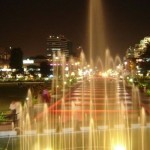
Traditional welcome on arrival at Delhi (India) airport by Visit India Trip and transferred by air-conditioned Vehicle to hotel for overnight stay. Delhi is the capital of the modern India, though it is made up of seven ancient cities, spanning over a period from 11th to 20th centuries. India is a land of wonders, love and ancient temple cities, where love letters are written on stone. Once you are touched by the magic of India, it’s hard to stop. India is a country steeped in history, diverse in landscape and abundant in just about every form of culture. India is beautiful, grand, fascinating and so full of life, energy and color that you can never visit it just once.”
Day 03: Delhi city tour
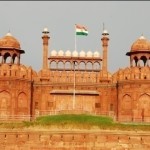
Today we go for full day a guided tour of the historic city of Delhi. The city where one can experience the influence of the many rulers who ruled this region, a city built and destroyed and re-built over seven times. We visit following places.
Red Fort: The Red Fort is a 17th century fort complex constructed by the Mughal emperor, Shah Jahan. Also known as Lal Qila, it served Mughal Emperors as their residence. Red fort lies along the Yamuna River, which surround most of the walls. This monument was designated a UNESCO World Heritage Site in 2007.
India Gate: The India Gate is situated in the heart of New Delhi. The India Gate was designed by Sir Edwin Lutyens. Built in 1931, it commemorates the 90,000 soldiers of the Indian Army who lost their lives while fighting for the Indian Empire, or more correctly the British Raj, in World War I and the Third Anglo-Afghan War.
Gandi Memorial: The former residence of Indira Gandhi is now a museum, displaying photos and newspaper clippings, as well as personal belongings. One can also see the collection of the personal moments of the Nehru-Gandhi family.
Rajghat: Raj Ghat is a memorial to Mahatma Gandhi, which was originally the name of a historic ghat of Old Delhi on the banks of river Yamuna. The memorial was designed by Vanu G. Bhuta, reflecting the simplicity of Mahatma Gandhi’s life. The design had the black marble slab surrounded by red earth.
Qutub Minar: Qutub Minar, today, a UNESCO World Heritage Site in Delhi was constructed with red sandstone and marble. It is the tallest minaret in India with a height of 72.5 metres (237.8 ft). The Construction was commenced by qutub-ud-din Aibak in 1192, but completed by Iltutmish.
Jama Masjid – one of the Asia’s largest mosque, cycle rickshaw ride through the narrow lanes of Old Delhi passing through Chandni Chowk, Chawri Bazaar etc, Humanyun’s Tomb, Qutab Minar – the 73m tall minaret, India Gate war memorial, President’s House and drive through Connaught Place.
Gold domed Sikh Temple – is the most prominent Gurudwara in Delhi and is associated with the eighth Sikh Guru, Guru Har Krishan. It was first built as a small temple by Sikh General Sardar Bhagel Singh in 1783, who supervised the construction of nine Sikh shrines in Delhi during the reign of Mughal Emperor Shah Alam. As with all Sikh Gurudwaras, the concept of langar (community meal) is practiced here and anyone may eat in the Gurudwaras Kitchen.
Highlight of the Tour: The Highlight of the tour is the Rikshaw ride in Old Delhi. We will pass throught the Chandni Chowk by the Rikshaw. The rikshaw pullers here take you on a ride through various routes. The Rikshaw ride give you a chance to glance at the colourful street of the place. Chandni Chowk is very colourful & you will find the hustle and bustle market.
(Meals: Breakfast, Lunch, and Dinner)
Day 4: Delhi – Varanasi by flight (flight duration is approx. 90 minutes)
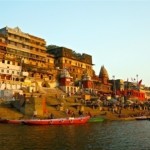
Relax and enjoy an airport transfer in a private vehicle, with driver, and English-speaking assistant. Enjoy your flight from Delhi to Varanasi.
The antiquity of Varanasi is veiled in immortal times and has been the centre of religion, learning and civilization since ages. It has an endearing universal mystique, which has to be experienced to be understood. The city gets its inherent charm from the location as it’s situated on west side of the Holy Ganges.
Varanasi has been the religious capital of Hinduism since time immemorial. Written records of the Skanda Purana and the Mahabharata mention its existence as long as 3000 years ago. It is probably the oldest living city in India, and one of the worlds most ancient. As a place of devotion and worship, Varanasi attracts thousands of pilgrims every year. Many Hindus in the latter part of their lives wish to spend their retirement here.
The mythological name of the city was Kashi meaning light or luminescence, i.e. the city that illuminates with its spiritual light. Two rivers, the Varuna and the Assi, meet the hilly Ganga at the northern and southern tips of the city respectively. In medieval times and till as recently as the mid-20th century, the city was known as Benares, which seems to have been the result of putting together the names of the rivers Varuna and Assi. Since 1956, the name had been changed to Varanasi. This evening proceed for evening Aarti ceremony at the Ghat. This is one of a lifetime opportunity for any traveler to this holy city (Meals: Breakfast, Lunch, and Dinner )
Day 5: Varanasi
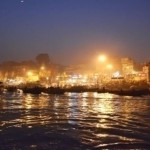
Early morning, we take a Boat Ride on the River Ganga with our guide to observe the riverside activities at the time including the famous Manikarnika Ghat where Hindus cremate their dead bodies round the clock. We observe Hindu pilgrims perform the rituals and following the centuries old tradition and belief that by dying in Varanasi or by immersing the mortal remains in the holy Ganges it clears one from the birth circle and you are incarnated to human life in the next birth. You would be taking a boat cruise on the river Ganges around all the Ghats and stopping at the important ones. On the way back, walk with our guide to your car through the narrow lanes of Kashi – the oldest part of Varanasi or also the other name of this ancient Hindu city. Later we go for guided excursion to Sarnath where “Lord Buddha” delivered his first sermon after attaining enlightenment, 2,500 years ago. Buddha came here after achieving enlightenment at Bodhgaya (in eastern India). A visit to the famous Benares Hindu University, It is the largest residential university in Asia, with over 12,000 students living on its campus. BHU founded in 1916. The campus spread over 1350 acres (5.5 km) was built on land donated by the Kashi Naresh, the hereditary ruler of Banaras. Spend the evening on the Ghats of the Ganges. We visit Vishwanath Temple. (Meals: Breakfast, Lunch, and Dinner)
Day 6: Varanasi – Khajuraho by flight (flight duration is approx. 1 hour)
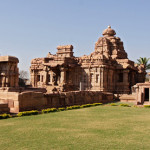
From your hotel, with driver, and English speaking guide, you will be will transferred to the airport for your flight.
After reaching Khajuraho we proceed for full day tour to Monuments in Khajuraho, which is a once in a life time experience. Situated in a town in the Indian state of Madhya Pradesh, about 620 kilometers southeast of New Delhi, this unique location is one of the most popular tourist destinations in all of India. Khajuraho contains the largest group of medieval Hindu and Jain temples, which are famous due to the erogenous nature of the sculptures. You’ll visit the western temples of Khajuraho accompanied by a local guide, principally known for their erotic scenes as depicted in the Kama Sutra. The Khajuraho temples are about 1000 years old and they are still in incredibly good condition, even though there are only 22 of the original 85 temples still left. The many intricate carvings that cover the Khajuraho temples depict all kinds of scenes from daily life and your guide will explain the history that surrounds them. Late evening, enjoy the Sound and Light show – history depicted beautifully on Khajuraho temples (Meals: Breakfast, Lunch, and Dinner)
Day 7: Khajuraho – Agra ( 403 kms , 5 hours 30 minutes )

You are assisted with your checkout from your hotel in the morning and then driven to Orcha. There is a break for lunch (included) on arrival, after which you will enjoy an exploration of the magnificent ruins at Orcha. The archeological treasures of Orcha were built between four and five centuries ago by the Hindu kings that ruled this area. After your exploration of the ruins you continue with your drive to Agra, arriving in the evening, where you are assisted with check-in to your hotel.
Evening, we will visit the Moonlight Garden also known as Mehtab Bagh. The places are situated on the opposite side of the Yamuna River. The Garden was built by the Emperor Babur. This is the best place to visit the Taj Mahal across the Yamuna River. (Meals: Breakfast, Lunch, and Dinner)
Day 8: Agra
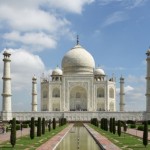
Morning we will visit the Taj Mahal at sunrise. Taj Mahal is UNESCO World Heritage Site and one of the New Seven Wonders of the world, Taj Mahal enthralls visitors with its shimmering beauty. Today your guide will pick you up from your hotel for a private tour of Taj Mahal, the most beautiful monument built by the Mughals, the Muslim rulers of India. TAJ MAHAL- Described as the most extravagant monument ever built for love, it was constructed by Mughal emperor Shah Jahan as a memorial to his queen Mumtaz Mahal and was made out of white marble took 22 years to complete (1630-1652 AD). On full moon nights, the glory of the Taj is at its best to witness. Over the centuries, the Taj has attracted more visitors than perhaps any other Monuments in the country. What makes the Taj unique is its perfect proportions, distinct femininity, medium of construction and ornamentation. Its marble exterior reflects rose and golden tints at sunrise and sunset, while it is dazzling white during the day and glows like a pearl in the moonlight and during the monsoon. (Meals: Breakfast, Lunch, and Dinner)
Day 9: Agra – Ranthambore by Road (Travel time approx 5 hours)

After breakfast proceed to Ranthambore. You are assisted with your checkout from your hotel and then you drive to Fatehpur Sikri. Enjoy a guided exploration of this beautiful uninhabited city. It was built by Emperor Akbar between 1570 and 1585 A.D. and is constructed primarily out of red sandstone. The Emperor moved his capital from Agra to this city and then, a few years later, abandoned it, returning back to Agra. Visit the tallest gateway in the world, the towering Bulund Darwaza (The Gate of Victory). In the northern part of the courtyard is the superb white marble tomb of Shaik Salim Chishti, built in 1570.
Continue on with your journey to Sawai Madhopur (Ranthambore National Park). The second half of this drive is through rural Rajasthan and there are multiple photo opportunities of the colorful villagers as they go about their daily activities. You will also encounter many camels and other livestock on this drive. You are greeted on arrival at your jungle lodge and assisted with your check-in. (Meals: Breakfast, Lunch, and Dinner)
Day 10: Ranthambore.

Covering an area of 410 square kilometers, Ranthambore National Park runs along the eastern spur of the Aravali mountain range until it meets with the Tiger Vindhya ranges. Ranthambore was once the Jaipur rulers’ private hunting ground. In 1972 it was declared a Sanctuary and was brought under the Project Tiger Conservation platform.
Enjoy wildlife safaris into the park in the morning and evening.
In between safaris, you have the option of a guided visit to the Ranthambore Fort. This excursion does have a fairly steep climb – approximately 700 feet of stairs. The massive Fort is one of the finest examples of the ancient Hindu concept of Vana-Durg, or a fort protected by a jungle. The history of this Fort (originally built in 944 A.D.) is a chronicle full of tales of blood and valor. Successively occupied by the Muslims, Rajputs and Mughals, the insides of the fort today lie partly in ruin. In the evening you are invited to join some of the other lodge guests around the campfire for some Indian barbecue delicacies before dinner. (Meals: Breakfast, Lunch, and Dinner )
Day 11: Ranthambore – Pushkar by Road (Travel time approx 4 h 16 min)
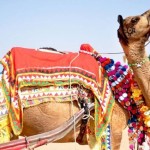
Drive to Pushkar in the morning. Arrive at Pushkar and check in to your boutique room or cottage. Participate in Pushkar Camel Fair festivities (Cattle Fair). Visitindiatrip.com Tour Directors will guide you to various activities and events in the Fair, and are available to assist you with your individual needs should any arise.
Afternoon – Tour the Fair camp grounds to view the cattle. Experience the trading activity with the cattle, which is at its peak. (Meals: Breakfast, Lunch, and Dinner )
Day 12: Pushkar – Jaipur (Travel time approx 3 hours)
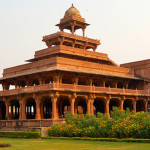
Transfer to Jaipur with private vehicle and driver. Jaipur is a major tourist attraction amongst international travelers.
In terms of architecture and layout, the city has a rectangular shape. All the designing was carried out as per instructions laid down in the ancient Indian treatise on architecture called the ‘Shilpa Shastras’. Exceptionally well-planned, Jaipur has broad roads and wide lanes that offset the uniform rows of the city’s shops in the main marketplace. The most important monuments in Jaipur proper are concentrated in the historical Palace area that is central to the city and is called the Chokri Sarhad. Over time it was seen that the setting sun cast a pink glow on the walls and tenements of the city’s structures and it came to acquire the name ‘Pink City’. (Meals: Breakfast, Lunch, and Dinner at the hotel)
Day 13: Jaipur

Today your guide will pick you up from your hotel for a private tour of Jaipur. The Pink City of Jaipur is a charming place, which dazzles the eye of a tourist with several architectural landmarks, stylish monuments, palaces, museums, wide avenues and colorful bazaars. Though less than 300 years old, the city is already full of mysteries and legends. Jaipur is surrounded by hilltop forts such as Amber Fort, Jaigarh and Nahargarh. Enjoy your wonderful discovery of the unparalleled beauty of Jaipur.
Amber Fort – Proceed for a morning excursion to Amber Fort. Elephant ride ascent to the fort. Perched on a hill some 11km from Jaipur, and nestling among the Aravalli Hills, is the historic fort-palace of Amber. Set in a picturesque background, the splendid Amber Fort (Jaigarh) was built in 1600 by Raja Man Singh, commander-in-chief of the Mughal army during Akbar’s reign and certainly one the greatest general of medieval India. The fort also made the headlines after Independence when it was supposed to be the most likely hiding place of the Kuchwahas’ famous lost treasure.
City Palace-Conceived and designed by Jai Singh, the City palace is a fine blend of Rajasthani and Mughal architecture. One of the most important architectural landmarks in Jaipur, this he palace complex has numerous buildings, courtyards, impressive gateways and temples. The palace houses Sawai Jai Singh’s seven-storey facade Chandra Mahal (“moon palace”), solid marble Mubarak Mahal, the Diwan-e-Aam and Diwan-e-Khas (the Hall of Private Audience). Chandra Mahal is still the residence of the present royal family.
Day 14: Jaipur
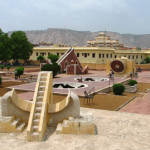
Today your guide will pick you up from your hotel for a Another day of private tour of Jaipur
Hawa Mahal- Arguably Jaipur’s most acclaimed landmark, the tapering Hawa Mahal, or “Palace of Winds” was built in 1799 to enable the ladies of the royal household to watch street processions while remaining in a strict state of purdah. Its five-storey facade, decked with no less than 593 finely screened windows and balconies, makes the building seem far larger than it really is; in fact it is little more than one room thick in most parts.
Jantar Mantar: Walk to the adjacent Jantar Mantar (Astronomical Observatory), a collection of architectural astronomical instruments, built by Maharaja Jai Singh II at his then new capital of Jaipur between 1727 and 1733. The observatory instruments are in most cases huge structures, built on such scale so that accuracy of readings can be obtained. The samrat yantra, for instance, which is a sundial, can be used to tell the time to an accuracy of about a minute. Enjoy the remainder of the day to wander about the local markets where you will find lovely silver jewelry, handicrafts and roadside mehndiwala (henna painters) who will paint ladies hands in the local tradition.
In the evening, take a romantic boat ride to the mysterious Jal Mahal (Water Palace), a five-story sandstone palace partially submerged in the middle of a lake. Stroll the rooftop gardens as the sun sets over the lake.
(Meals: Breakfast, Lunch, and Dinner )
Day 15 :Jaipur – Delhi by road – (270 Kms -06 Hrs)
Today we transfer to Delhi by road. Upon arrival, time to freshen up before tonight’s festivities. Bid farewell to your new-found friends and Tour Manager at a festive Farewell Dinner at the hotel. (Meals: Breakfast, Lunch, and Dinner at the hotel)
Social Share
Other Tour packages
News from our blog
- The return of Kashmir December 4, 2014
- Top 10 activities in Kerala, India’s deep south December 4, 2014
- Tamil Nadu to open 25 ecotourism sites December 4, 2014
- Rocky Mountaineer appoints Mazda Travel as General Sales Agent in India December 4, 2014
- Etihad Airways and others to start airlines operations in Kolkata December 4, 2014


